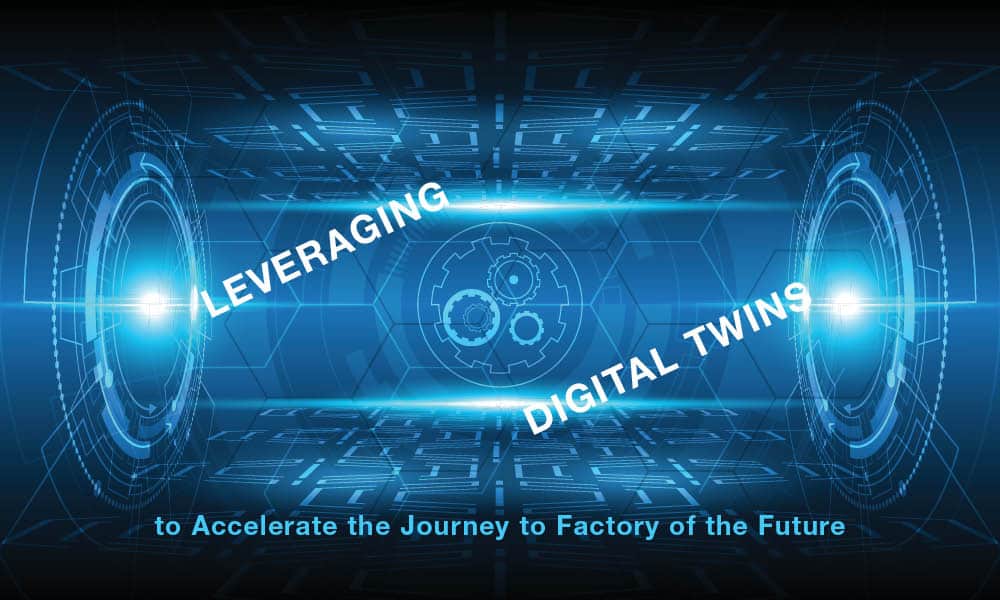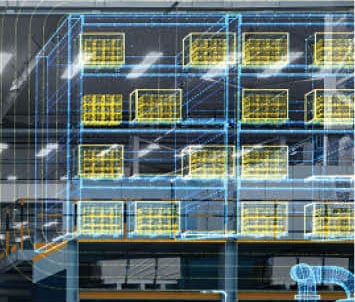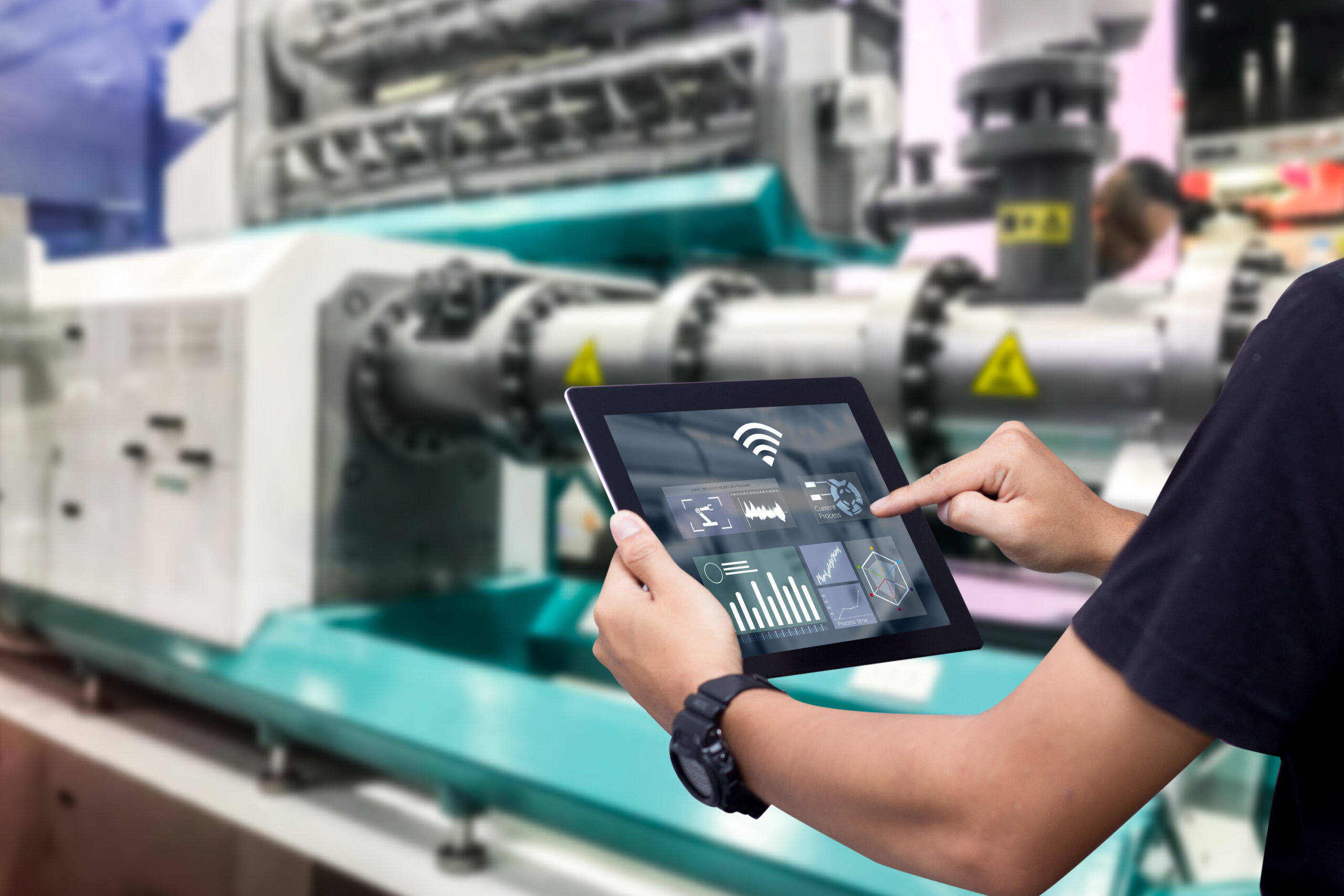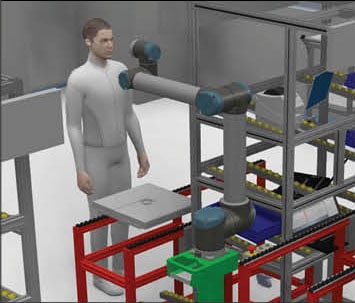Leveraging Digital Twins to Accelerate the Journey to Factory of the Future

Companies have a tall order to transform their operations into factories of the future and one technology that can be a key accelerator is digital twins.

The future of manufacturing is reliant on organizations’ ability to modernize, optimize and automate across health, safety, and environment (HS&E), asset insights, predictive maintenance and service, as well as operations, supply chain, and production schedules.
COVID-19 disrupted manufacturing and supply chains in an unprecedented way and has forced companies to rethink their global manufacturing and supply chain strategies. Manufacturing companies responded to this disruption by working on both short and medium-term measures. In the short term, they focused on ensuring business continuity, the protection of employees, and the minimization of disruption across their operations. For the mid-term, many companies started to move towards establishing new networks of local supply ecosystems and diversifying of their supplier base.
Analysts have scrutinized what this ’next normal’ will actually look like. It’s clear that there are some common areas that deserve the highest focus and priority, including:
- Re-skilling and prioritizing the safety of the workforce
- Putting a greater focus on workforce automation
- Building ’resiliency’ into supply chains
- Increasing the agility and flexibility of manufacturing
Together, all these priorities contribute to the overall business continuity of operations, and they all have three key attributes that need to be considered that will drive the trends of the future: humanity, connectivity, and sustainability.
What Does the Factory of the Future Look Like?
To overcome these trends and challenges, we have the Factory of the Future, also referred to as Industry 4.0, Smart Manufacturing, and the Connected Factory. In these advanced manufacturing systems, knowledge will have as much currency as capital. Highly automated, interconnected manufacturing tools will be designed to exploit information throughout the full range of value-adding activities spread across multiple production sites involving numerous supply chain partners. Self-regulating machines will customize what’s being built, allocate resources in the most efficient manner, and interface seamlessly between the physical and virtual worlds of production and assembly. Predictive analysis will be done through feedback and control loops, based on real-time shop floor information generated by wireless sensors in manufacturing equipment, processes, and even products.
Based on actionable insights that highly processed digital data will generate, companies expect Factories of the Future to offer a range of measurable benefits, including a more efficient use of people and assets, such as labor costs, working capital and fixed assets; greater capacity for innovation; the opportunity to enhance customer value and pricing power; development of new products, services, and business models, and shorter product development cycles.

The Challenges of the Factory of the Future
Even if companies were moving in lockstep toward digitizing their factories—which they are not—they would still need to overcome major challenges. One of the most daunting is that the large volume of IoT data generated by people, devices, and machines, along with the complexity of the processing of events and decision making, will require a unified digital architecture. Universally accepted standards and protocols to ensure seamless communications and transfer of all kinds of data will be essential.
As it is, most manufacturing enterprises aiming to introduce their own vision of Factory of the Future concepts already operate productions systems in which most devices and machines are connected with control systems via various layers of automation, such as enterprise resource management and product life cycle software. However, in current automated systems, virtually every sensor, device, or machine has its own dialect for digital integration.
To introduce and integrate advanced Factory of the Future technologies (i.e., the migration of production systems towards distributed and IOT capabilities, interoperability, and intelligence), companies will need the appropriate IT system architectures based on consistent protocols.
The Factory of the Future is predicated on all these things working together, starting with common communications protocols, which are helping organizations in various industries address the problem.
All the key technologies for Future Factory are still rapidly evolving, as in the case of robotics and advanced manufacturing, but they are mature enough for companies to begin or accelerate their transformation to digital factories that are adaptive, fully connected, analytical, and more efficient. To keep pace with the technology advances, however, manufacturers should be following their progress closely and investing in them.
Manufacturers also should be focused on finding the highly skilled talent that has the necessary apprenticeships, technical qualifications, and degrees that companies will need to implement Future Factory. The laws of supply and demand mean manufacturers are going to have to pay more if they want to attract the talent needed for the emerging industrial revolution.
The Role of Digital Twins in the Factory of the Future
The Factory of the Future agenda has breathed new life and potential into the digital twin concept. Academic and business thought leaders have written extensively about the topic over the past years and the terminology used spans a wide spectrum. One recent evolution is the concept of virtual digital twin, a real-time virtual representation of a product, process, or a system that is used to model, visualize, predict, and provide feedback on properties and performance, and is based on an underlying digital thread.

In current automated systems, virtually every sensor, device, or machine has its own dialect for digital integration
Virtual digital twin not only encompasses a product, but also includes people, processes, connections, and business scenarios before, during, and after manufacturing that can be modeled, optimized, re-modeled, and re-optimized in a sustainable way. The digital thread is made up of an interconnected network of process and digital capabilities that create, communicate, and transact product information throughout the product lifecycle. This allows the virtual model to be continuously updated across the lifecycle of the physical asset (or across the parameters of production processes), with additional data gathered from real-world interactions.
With virtual digital twin, you can leverage it as a technology foundation to pursue discoveries, nurture them, and bring the results to business and people throughout the world. Sophisticated modeling and simulation, data acquisition, analysis and reporting, and breakthroughs in imaging and manufacturing come together for organizations to achieve sustainable innovation. This also provides a global operations management cockpit that supports knowledgeable decision making to keep operations running smoothly and helps companies optimize production for greater efficiency and output, while reducing costs and time-to-market.

Four Steps to Virtual Digital Twin Realization
- Collaboration is the process by which the different stakeholders in the manufacturing organization gather to work out the needs, wants, and goals of the overall project. Design engineering, manufacturing engineering, quality assurance, sales, procurement, and management all may have useful input into the creation of a unified system.
- Modeling is the starting point for digitalization. It is the rendering of physical systems (and often humans, too) to create an accurate representation of machines, processes, and workflows. Accuracy here is essential, and it must be maintained throughout the life of the project. Ad hoc or emergency changes to equipment or processes must be reflected in the models, a task made easier as managers develop trust in the systems to test solutions before they’re ’cut into metal.’
- Optimization is the payoff from virtual digital twin, the process where changes are tested, tried virtually, and tested again to reduce production bottlenecks and improve efficiency. This is where planning changes become ’what if’ experimentation, iterating many changes in real time, from equipment cycles to worker time and motion study.
- Perform is the goal of the digital twin and the actual implementation of the new processes and procedures are worked out in the virtual factory. With a successful use of virtual digital twin, production changes are swift, trouble-free, and downtime is minimized. Sensor-equipped equipment then feeds real-time data back to the twin to confirm outcomes and establish a new baseline for the next series of experiments and improvements.
Adopters of Factory of the Future
A leading CPGR manufacturer has implemented its vision of Factory of the Future to deliver innovation faster, cheaper, smarter, and has achieved the following:
- Brand integrity with interlocking traceability, including suppliers
- Enforcement of best practices across evolving supply chain
- New product introductions delivered up to 20% faster
- Lower cost-of-goods sold by up to 27%, visibility and control over 30 sites, globally coordinated NPI
Another example of company leveraging a virtual digital twin to achieve their vison of Factory of the Future is a leading manufacturer of civil and defense helicopters. This company chose to deploy smart factory methods to maintain its leading position on the market. A smart factory solution is helping them monitor, control, and validate all aspects of manufacturing operations with digital precision, ranging from replicable processes and production sequences to the flow of deliverables throughout their supply chain.

In these advanced manufacturing systems, knowledge will have as much currency as capital
Key Benefits of Factory of the Future
The trends of today may manifest in unique ways but always require similar solutions that drive agility and sustainability to address the challenges. If change is to be expected, then the ability to respond must follow, both strategically and tactically. Whether in process simulation, manufacturing execution, or supply chain planning, virtual digital twin can deliver a portfolio of capabilities to help organizations move into the future, including:
- Improving operational excellence by integrating all data sources, including IoT, for greater visibility and insight
- Enabling manufacturing transformation by integrating design, production, distribution, people, and processes
- Achieving a ’single version of the truth’ that enables a synchronized and coordinated flow of information for tighter control over disparate operational processes in plants
- Enabling optimized, paperless manufacturing that electronically delivers work instructions, error proofing, and cross-functional coordination throughout the extended production process
- Managing the complete business process lifecycle for consistent deployment of global processes and best practices
- Empowering manufacturers to reduce waste, inventory, and cycle times while improving efficiency, quality, and customer satisfaction
- Providing a true foundation for enterprise quality, continuous improvement, and compliance
- Driving efficiency by pulling data from IoT sensors to trigger real-time execution decisions
- Extending Lean and Six Sigma initiatives beyond functional teams and creating long-term improvement sustainability
CONCLUSION
Manufacturing operations are complex and today’s hyper connected, fast-evolving markets only add to the challenge. To keep up with a global economy in an advanced digital age, manufacturers must have the visibility and control to satisfy customers who are demanding more than products and services; they want individualized, emotional experiences that they can ‘own.’

We must rethink industry of the 21st century to embrace and benefit from industry renaissance.
The Factory of the Future enables you to:
Achieve Sustainable Innovation and Excellence
Reduce risk, improve, and predict operational performance by combining the power of virtual and real worlds where people and machines come together to transform manufacturing.
Create Value Networks
Transform supply chains into value networks by removing barriers between business partners to deliver sustainable innovation to consumers.
Empower the Workforce of the Future
Reveal the workforce talents of today to enable the workforce of tomorrow with ready access to knowledge and know-how. M
Footnotes:
1. https://ec.europa.eu/environment/strategy/circular-economy-action-plan_en
2. https://rsmus.com/economics/rsm-middle-market-business-index-mmbi/environmental-social-and-governance-esg.html
3. https://www.bloomberg.com/professional/blog/supply-chains-get-serious-about-the-circular-economy/
4. https://www.mckinsey.com/industries/electric-power-and-natural-gas/our-insights/plugging-in-what-electrification-can-do-for-industry
About the author:

Prashanth Mysore is the Director of Strategic Business Development at Dassualt Systemes DELMIA and is based in Australia.
Footnotes:
1. https://ec.europa.eu/environment/strategy/circular-economy-action-plan_en
2. https://rsmus.com/economics/rsm-middle-market-business-index-mmbi/environmental-social-and-governance-esg.html
3. https://www.bloomberg.com/professional/blog/supply-chains-get-serious-about-the-circular-economy/
4. https://www.mckinsey.com/industries/electric-power-and-natural-gas/our-insights/plugging-in-what-electrification-can-do-for-industry
